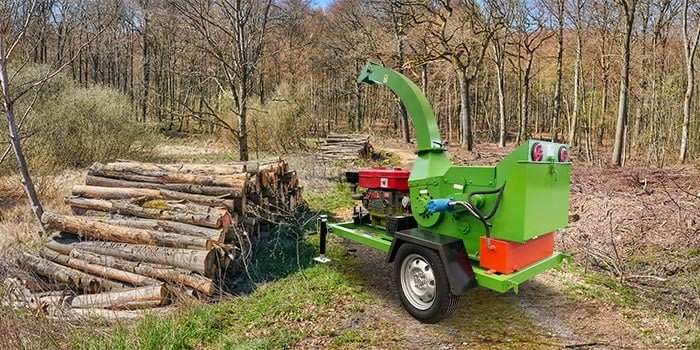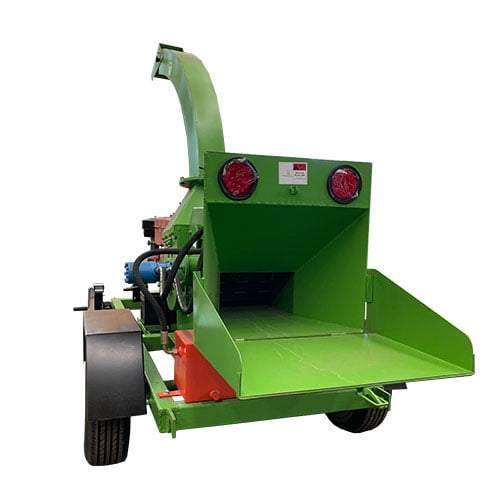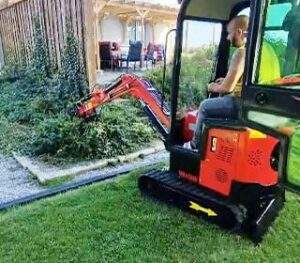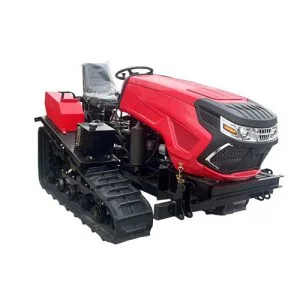Wood Chipper Machines: Increasing Productivity and Sustainability in Forestry
Introduction

Wood chipper machines have revolutionized the forestry industry, providing an efficient means of processing wood waste into valuable byproducts. These machines are designed to chip wood into small pieces that can be used for mulch, compost, or as a raw material for paper production. In this blog post, we will explore the different types of wood chipper machines, their benefits, and how they contribute to increased productivity and sustainability in forestry.
Understanding Wood Chipper Machines
Wood chippers, also known as wood crushers, are machines that reduce larger pieces of wood into smaller chips through a cutting or grinding process.
Benefits of Wood Chipper Machines
Wood chipper machines offer several benefits to the forestry industry, including:
Efficiency: They can process large amounts of wood quickly, increasing overall productivity.
Cost-Saving: By converting waste wood into usable products, chippers reduce disposal costs.
Sustainability: Chippers promote sustainable forestry by repurposing waste material.
Versatility: They can handle a variety of wood types and sizes, from small branches to large tree trunks.
Safety: Using a wood chipper is safer than manual chipping, reducing the risk of injury.
Types of Wood Chipper Machines
Portable Chippers
Portable chippers are compact and can be easily moved around a work site. They are ideal for small-scale operations and home use.
Stationary Chippers
These chippers are larger and more powerful, designed for continuous operation in a fixed location. They are commonly used in sawmills and large-scale forestry operations.
Drum Chipper
Drum chippers use a large, cylindrical drum with knives attached to chip the wood. They are known for their high capacity and efficiency.
Flail Chipper
Flail chippers use a series of swinging hammers to break down the wood. They are versatile and can handle wet or green wood.
Comparison Table
Here’s a comparison of different types of wood chipper machines:
| Feature | Portable Chippers | Stationary Chippers | Drum Chipper | Flail Chipper |
|---|---|---|---|---|
| Mobility | High | Low | Low | Low |
| Processing Capacity | Low | High | High | Medium |
| Power Requirement | Low | High | High | Medium |
| Versatility | Medium | Low | High | High |
| Application | Small-scale | Large-scale | Large-scale | Medium to Large-scale |
Factors Affecting the Choice of Wood Chipper Machines

When selecting a wood chipper machine, consider the following factors:
Operational Needs: The specific requirements of your forestry operation, such as the volume of wood to be processed.
Mobility: Whether the machine needs to be moved frequently or if it will be in a fixed location.
Budget: The cost of the machine and its operating expenses, including fuel and maintenance.
Wood Type: The type of wood you will be processing, as some chippers are better suited for certain types of wood.
Safety Features: The safety mechanisms in place to protect operators from injury.
The Future of Wood Chipper Machines
The future of wood chipper machines looks promising, with ongoing research and development aimed at improving efficiency, reducing environmental impact, and enhancing safety features. As the demand for sustainable forestry practices grows, the role of wood chipper machines in the industry will continue to expand.Innovations such as automatic feed systems, advanced blade designs, and noise reduction technology are all contributing to the evolution of wood chipper machines. With these advancements, we can expect to see increased productivity, lower operating costs, and a more eco-friendly approach to wood processing in the years to come.
Conclusion
Wood chipper machines play a crucial role in increasing productivity and promoting sustainability in the forestry industry. By efficiently converting wood waste into valuable products, these machines help reduce waste, save costs, and contribute to a circular economy. As technology advances, wood chipper machines are becoming more efficient and user-friendly, making them an essential tool for modern forestry operations.
FAQ
How do wood chipper machines contribute to increased productivity in forestry operations?
Wood chipper machines streamline the process of processing timber and wood waste, significantly reducing manual labor and time required for traditional methods. By efficiently converting wood into chips of various sizes, they facilitate faster clearing of forested areas, leading to enhanced productivity in forestry operations.
What types of wood waste can be processed by wood chipper machines?
Wood chipper machines are versatile and can handle various types of wood waste, including branches, tree tops, logging residues, and even whole trees. They are designed to process both hardwoods and softwoods, making them suitable for a wide range of forestry applications.
How do wood chipper machines promote sustainability in forestry practices?
Wood chipper machines promote sustainability by effectively managing wood waste and reducing environmental impact. By converting wood waste into valuable resources such as bioenergy or organic mulch, they minimize the need for burning or landfilling, which can release harmful pollutants into the atmosphere. Additionally, wood chipper machines support soil conservation and erosion control by producing organic mulch that enriches soil health and promotes biodiversity.
Are wood chipper machines safe to operate?
While wood chipper machines can be safe to operate when used properly, they can also pose significant risks if proper safety precautions are not followed. Users should receive adequate training on machine operation and maintenance and adhere to safety guidelines, including wearing appropriate personal protective equipment (PPE) and ensuring that the machine is properly maintained and inspected regularly.
What factors should be considered when choosing a wood chipper machine for forestry applications?
When choosing a wood chipper machine for forestry applications, several factors should be considered, including the type and size of wood to be processed, the desired output size of wood chips, the power source (e.g., electric or diesel), mobility requirements, and budget constraints. It’s essential to select a machine that meets the specific needs and requirements of the forestry operation to ensure optimal performance and productivity.



